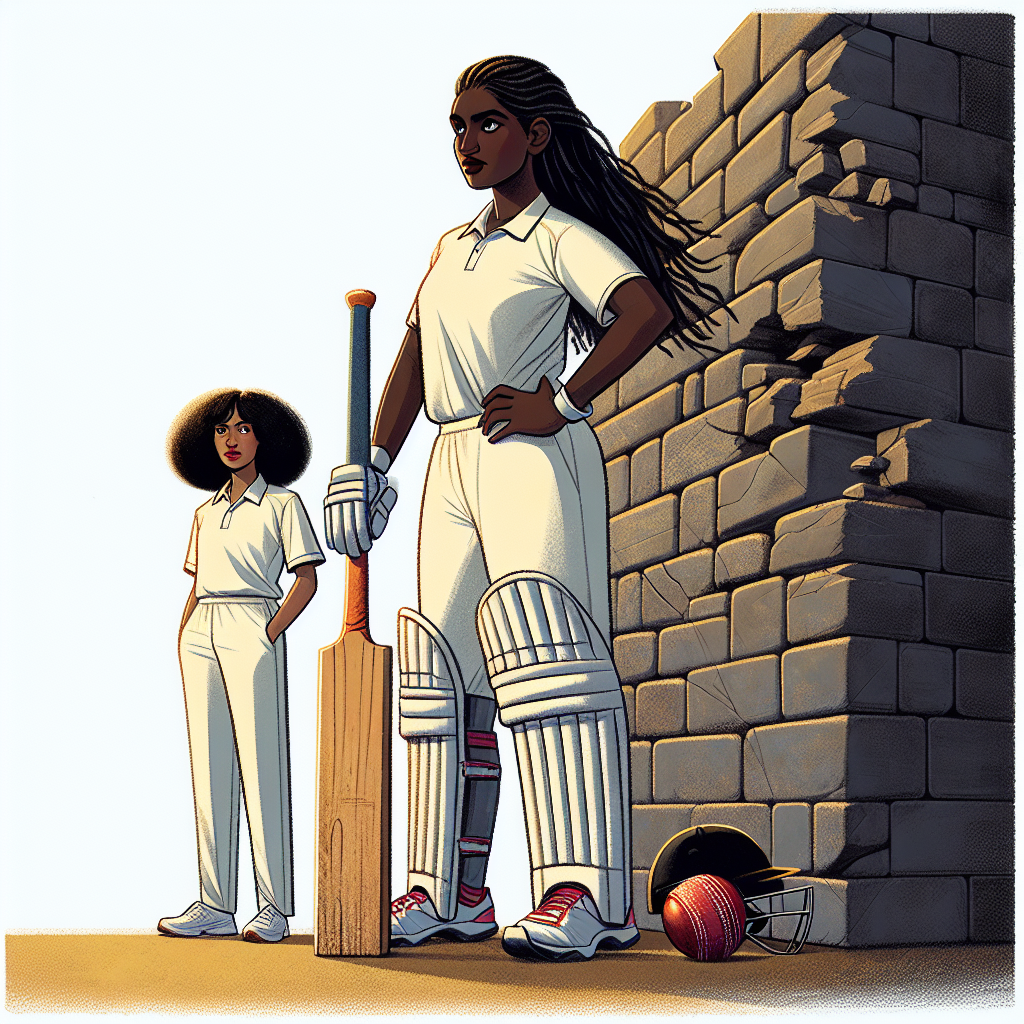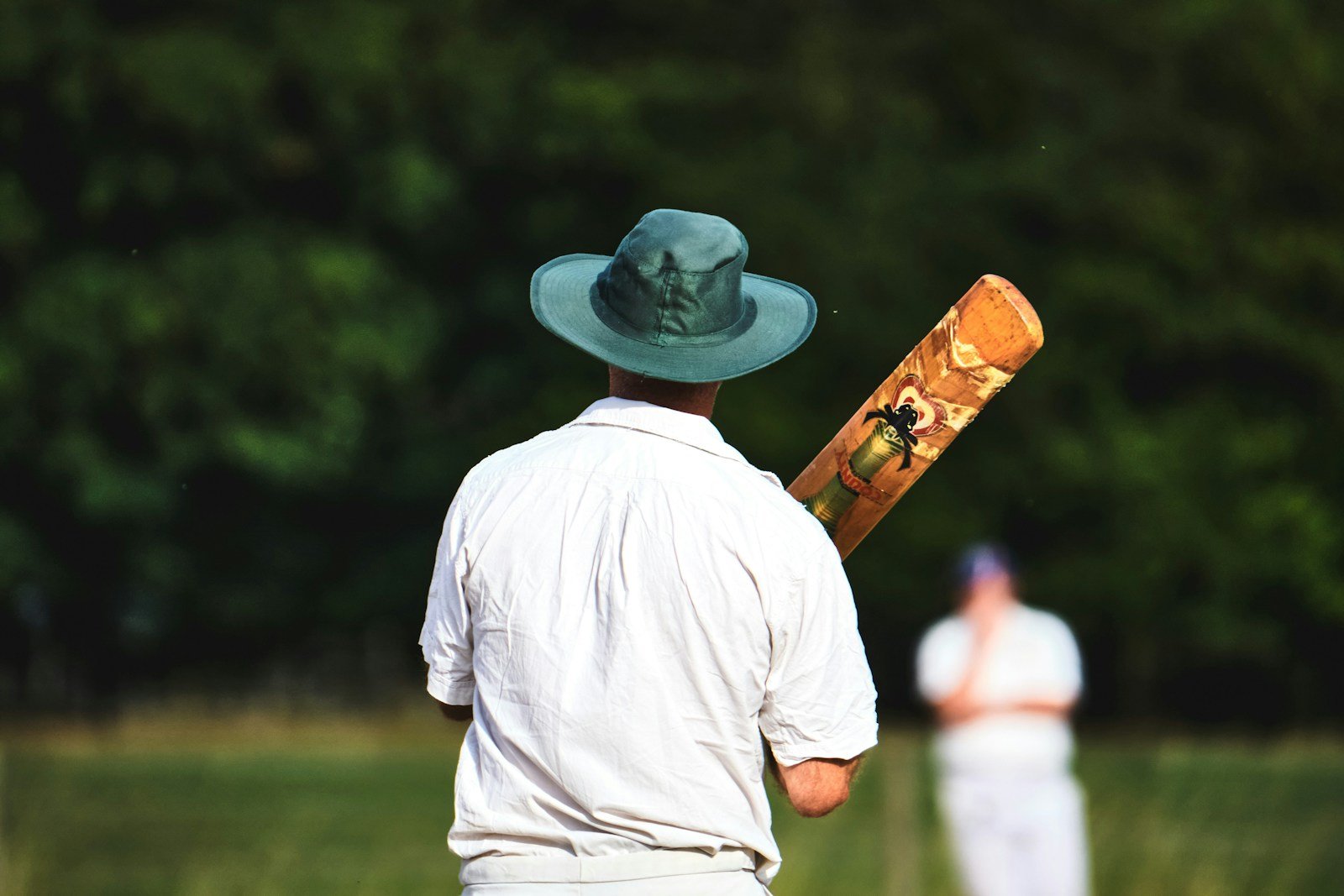In the fascinating world of cricket, there is an extraordinary story that often goes untold – the relentless journey of pioneering women breaking barriers in the sport. “Pioneering Women in Cricket: Breaking Barriers” pays homage to the women who defied societal norms, shattered glass ceilings, and fought for recognition in a male-dominated field. This article sheds light on the incredible narratives of these trailblazers, shedding light on their struggles, triumphs, and the indelible mark they left on the game. From defying cultural expectations to overcoming institutional biases, these women have stood tall, inspiring generations of female cricketers to dream without limits. Embark on a remarkable journey as we explore the awe-inspiring accounts of the pioneers who paved the way for equality and empowerment in women’s cricket.
Overview of Women’s Cricket History
Early days of women’s cricket
Women’s cricket has a rich history that dates back to the 18th century. While the origins of the sport can be traced to men’s cricket, women quickly started to establish their presence in the game. The earliest recorded match of women’s cricket took place in 1745 in Surrey, England, where women challenged men to a game and emerged as competent players. However, it wasn’t until the 19th century that organized women’s cricket began to gain momentum.
Significant historic games
In the late 1800s, women’s cricket gained recognition and popularity with significant matches. One of the most notable games was played in 1887 between teams captained by Lady Clarke and Miss Britton. This match marked a significant milestone for women’s cricket, as it was recorded by the press and garnered attention from cricket enthusiasts. It paved the way for further development of the women’s game and inspired young female cricketers who aspired to play at a competitive level.
The establishment of women’s cricket institutions
The establishment of women’s cricket institutions played a crucial role in fostering the growth and development of the sport. The Women’s Cricket Association (WCA) was founded in England in 1926, becoming the first governing body for women’s cricket. This institution worked tirelessly to promote and organize women’s cricket, ensuring it received the recognition and support it deserved. Over time, similar organizations were established worldwide, laying the foundation for structured women’s cricket institutions globally.
The Inaugural World Cup 1973
The event inception
The inaugural Women’s Cricket World Cup was held in England in 1973, marking a significant milestone in the history of the sport. The tournament was a result of the collective efforts of various individuals, including Rachael Heyhoe-Flint, who played a pivotal role in securing sponsorship and organizing the event. The Women’s Cricket Association, together with the International Women’s Cricket Council, ensured that the tournament ran smoothly and effectively.
Key results
The tournament featured teams from England, Australia, New Zealand, and the West Indies. England emerged as the champions, defeating Australia in the final. The path to the final was not easy, as the teams showcased remarkable skills and determination. The standout performers included Enid Bakewell, who scored a crucial century for England in the final, and Lynn Thomas, who played a significant role in Australia’s journey to the final. The tournament showcased the talent and competitive spirit of women cricketers, captivating audiences around the world.
Legacy of the inaugural world cup
The inaugural Women’s Cricket World Cup left a lasting legacy that continues to shape the sport today. It provided a platform for women cricketers to display their skills at an international level, fostering professionalism and elevating the status of women’s cricket. The success of the tournament spurred further interest in women’s cricket, leading to the establishment of regular international competitions and increased support from cricket governing bodies. The inaugural World Cup laid the foundation for future generations of women cricketers to excel and achieve remarkable milestones.
Pioneering Women Cricketers
Early trailblazers in women’s cricket
In the early days of women’s cricket, several pioneering individuals paved the way for the sport’s development. One such trailblazer was Marylebone Cricket Club (MCC) member and noted suffragette, Lilian Violet Bland. She played a key role in organizing women’s matches and advocating for equal opportunities in cricket. Additionally, other women cricketers, such as Myrtle Maclagan, Betty Archdale, and Rachel Lowe, broke barriers and challenged societal norms by playing the sport they loved.
Achievements and records
These early pioneers achieved remarkable feats and set records that continue to inspire women cricketers today. For instance, in 1937, Myrtle Maclagan became the first Englishwoman to score a double century in a Test match against Australia. Her record-breaking knock of 119 and 205 runs showcased her exceptional batting skills and paved the way for future generations to push the boundaries of what was considered achievable in women’s cricket.
Influence on the sport and society
The influence of these pioneering women cricketers extended beyond the boundaries of the cricket field. Their relentless dedication to the sport and their determination to challenge societal norms inspired a generation of women, encouraging them to break barriers and pursue their dreams. These trailblazers played a significant role in transforming women’s cricket from a marginalized sport to a respected and widely followed game, proving that gender should never be an obstacle to achieving greatness.
Betty Wilson: Australia’s First Female Superstar
Biography of Betty Wilson
Betty Wilson, born on September 21, 1921, in Melbourne, Australia, is widely regarded as Australia’s first female cricket superstar. She grew up in a sporting family and developed a passion for cricket from an early age. Wilson’s natural talent and exceptional skills soon gained recognition, placing her among the finest cricketers of her time.
Betty’s cricket career
Betty Wilson’s cricket career spanned from 1947 to 1958, during which she represented Australia in 11 Test matches. She excelled both as a batswoman and a bowler, and her excellent all-round abilities have few parallels in the history of women’s cricket. Known for her powerful hitting, Wilson amassed a total of 862 runs in Test matches, including five centuries and two half-centuries. She was also an exceptional off-spin bowler, taking 68 wickets at an impressive average of 11.8.
Her impact and legacy
Betty Wilson’s impact on women’s cricket went beyond her on-field performances. She inspired countless aspiring cricketers with her skill and determination, proving that women can excel in traditionally male-dominated sports. Her achievements helped raise the profile of women’s cricket in Australia and encouraged more girls to participate in the sport. Wilson’s contributions to the game were recognized in 1985 when she was inducted into the Australian Cricket Hall of Fame, solidifying her legacy as a true pioneer of women’s cricket.
Rachael Heyhoe-Flint: An England Icon
Meet Rachael Heyhoe-Flint
Rachael Heyhoe-Flint, born on June 11, 1939, in Wolverhampton, England, is a name synonymous with women’s cricket. An iconic figure in the sport, she played a crucial role in advancing women’s cricket and breaking down barriers that hindered its growth.
Rachael’s career highlights
Rachael Heyhoe-Flint’s cricket career spanned from 1960 to 1982. She captained the England women’s cricket team and led them to victory in the inaugural Women’s Cricket World Cup in 1973. Heyhoe-Flint’s leadership skills and batting prowess were instrumental in England’s success, and she played a pivotal role in popularizing women’s cricket globally. She showcased exceptional talent, scoring centuries and setting unmatched records, solidifying her position as one of the sport’s true legends.
Her role in promoting women’s cricket
Heyhoe-Flint’s contributions to women’s cricket extend beyond her playing career. She was instrumental in campaigning for better recognition and support for women cricketers, advocating for equal pay and opportunities. Heyhoe-Flint’s efforts helped shape the future of women’s cricket, leading to increased visibility, acceptance, and the establishment of professional structures within the sport. Her tireless work as an ambassador for women’s cricket has left an indelible mark on the sport’s history.
Belinda Clark: The First Double Centurion
Background of Belinda Clark
Belinda Clark, born on September 10, 1970, in Newcastle, Australia, is considered one of the greatest female cricketers in history. Clark’s love for cricket blossomed during her childhood, and she dedicated herself to the sport from an early age. Her exceptional talent and unwavering commitment paved the way for a career that redefined the standards of excellence in women’s cricket.
Key achievements
Belinda Clark’s most significant achievement came on December 16, 1997, when she became the first cricketer, male or female, to score a double century in a limited-overs international match. Her remarkable innings of 229 not out against Denmark remains an iconic moment in cricket history. Clark’s ability to dominate the opposition with her batting skills and her unmatched consistency makes her one of the greatest contributors to the sport.
Influence on the future generation
Clark’s impact on women’s cricket extends beyond her individual achievements. She inspired a generation of young cricketers who aspired to follow in her footsteps. Her success on the international stage showcased the immense talent and potential of women cricketers, and her resilience in the face of challenges encouraged young girls to dream big and pursue their passions. Belinda Clark’s influence continues to shape the future generation of women cricketers who strive for excellence.
Developments in Women’s Cricket
Professionalisation of the game
In recent years, women’s cricket has experienced a significant shift towards professionalization. Cricket boards and governing bodies worldwide have recognized the potential of the sport and invested resources to develop professional structures. This includes the establishment of domestic leagues, central contracts for players, and increased opportunities for international competition. The professionalization of women’s cricket has resulted in improved training facilities, access to quality coaching, and enhanced pathways for young talent to flourish.
Media coverage and sponsorship
One of the pillars supporting the growth of women’s cricket is increased media coverage and sponsorship. As the popularity of women’s cricket has grown, so has the interest from broadcasters and sponsors. Major television networks now broadcast internationals women’s cricket matches, providing fans with the opportunity to follow the sport more closely. This increased exposure has attracted sponsors who recognize the potential for brand visibility and association with women’s cricket, resulting in financial support and partnerships that contribute to the sport’s development.
Growing fanbase
Women’s cricket has seen a tremendous surge in its fanbase over the years. Increased media coverage, accessibility, and visibility of the sport have drawn more spectators to matches, both live and televised. The passion and skill displayed by women cricketers have made a lasting impact on fans, who appreciate the competitiveness and excitement the sport offers. This growing fanbase not only supports women’s cricket financially but also plays a crucial role in inspiring and motivating players to excel.
Women’s Cricket in the 21st Century
Evolution and growth
Women’s cricket in the 21st century has witnessed exponential growth and evolution. The sport has become more competitive, with teams from different nations consistently raising the bar. The emphasis on athleticism, skill, and strategy has led to a higher level of play, captivating audiences worldwide. The 21st century has seen the establishment of T20 leagues specifically for women, providing an additional platform for players to showcase their talent and compete with the best in the world.
Key events and games
The 21st century has witnessed several key events and games that have shaped women’s cricket. The Women’s Cricket World Cup, held every four years, continues to be the pinnacle of the sport, attracting global attention and showcasing the finest talent. Notable games, such as the 2005 ICC Women’s World Cup final between Australia and India, and the 2017 ICC Women’s World Cup final between England and India, have captivated audiences with thrilling performances and nail-biting finishes, signaling the increasing competitiveness and entertainment value of women’s cricket.
Notable players of the era
The 21st century has seen the rise of numerous exceptional women cricketers who have left an indelible mark on the sport. Players like Mithali Raj (India), Meg Lanning (Australia), Ellyse Perry (Australia), and Suzie Bates (New Zealand) have redefined the standards of excellence in women’s cricket. Their outstanding skill, leadership, and consistent performances have earned them global recognition and respect, inspiring young players and fueling the growth and popularity of women’s cricket.
Challenges Faced by Women in Cricket
Societal attitudes towards women cricketers
Despite the progress made in women’s cricket, societal attitudes continue to pose challenges for women cricketers. Gender stereotypes that deem cricket a “men’s sport” hinder the growth and recognition of women’s cricket. Misconceptions about women’s abilities and limited opportunities for exposure and recognition often result in a lack of encouragement and support for aspiring female cricketers. Overcoming such societal attitudes requires persistent advocacy, education, and changing mindsets to ensure equality and fair opportunities for women in the sport.
Pay disparity
Pay disparity remains a significant challenge faced by women cricketers. Female players often receive considerably lower remuneration compared to their male counterparts in domestic and international cricket. This lack of equal pay not only undermines the value and recognition of women’s cricket but also creates financial disparities that limit players’ ability to focus solely on their cricket careers. Addressing pay disparity is essential to ensure that women cricketers receive the recognition and financial support they deserve.
Lack of support and infrastructure
The lack of support and infrastructure presents another obstacle to the development of women’s cricket. Many regions still do not provide adequate funding, training facilities, or coaching resources for women cricketers. Limited access to quality infrastructure and coaching impedes skill development and restricts the growth of the sport. Investment in infrastructure, coaching programs, and talent identification at grassroots levels is crucial to create a strong foundation for women’s cricket and nurture young players with potential.
Future of Women’s Cricket
Predictions for the sport
The future of women’s cricket is promising, with several predictions pointing towards continued growth and recognition. The sport is expected to attain even higher standards of competitiveness and professionalism, akin to men’s cricket. Increased media coverage, sponsorship, and participation at both domestic and international levels will further elevate the status of women’s cricket. The development of women’s T20 leagues and the inclusion of women’s cricket in major global sporting events will expand the sport’s reach and appeal.
Potential changes and developments
Several potential changes and developments could shape the future of women’s cricket. Equal pay for male and female cricketers is emerging as a crucial area of focus. Efforts to bridge the pay gap and ensure equitable opportunities for female cricketers will contribute to a more inclusive and sustainable sport. Additionally, further investment in infrastructure, coaching, and talent development will enhance the pool of talented women cricketers and foster the growth of the sport at all levels.
Role models and their influence
Role models play a vital role in inspiring and influencing the future generation of women cricketers. The achievements and dedication of current players serve as a beacon of hope and motivation for aspiring young athletes. The positive impact of role models can be harnessed by promoting their stories, facilitating mentorship programs, and encouraging the active involvement of current and retired players in youth development initiatives. By nurturing a strong pipeline of talented players and fostering a supportive environment, role models will continue to shape and uplift women’s cricket in the years to come.
In conclusion, women’s cricket has come a long way since its early days, driven by the dedication and perseverance of pioneering women cricketers. The inaugural Women’s Cricket World Cup in 1973 marked a significant milestone for the sport, paving the way for its growth and development. Trailblazers like Betty Wilson, Rachael Heyhoe-Flint, and Belinda Clark inspired generations with their exceptional achievements and advocacy for women’s cricket. Despite the challenges of societal attitudes, pay disparity, and limited support, women’s cricket continues to evolve and thrive, driven by increased professionalization, media coverage, and a growing fanbase. The future of women’s cricket holds great promise, with further growth, potential changes, and the influence of role models shaping the sport for generations to come.



